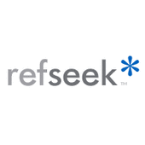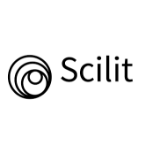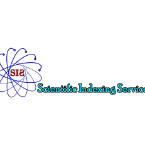Article / Research Article
Global Healthcare Communication Leader, Pace University-New York, USA.
Nonye Tochi Aghanya MSc, RN, NP-C
Global Healthcare Communication Leader,
Alma mater Pace University-
New York, USA
12 October 2025 ; 27 October 2025
At the heart of every clinical encounter lies a silent but consequential question: Which aspects of verbal communication influence the healing process for patients? Modern health care systems marked by strict protocols and time limitations alongside automation tend to overlook the ethical and therapeutic importance of clinician-patient communication. The paper presents the argument that communication plays a fundamental role in healing and is not simply a secondary component of care particularly when considering health longevity. The latest clinical literature identifies communication as essential for diagnosis and relationship building while serving as an epistemic tool through guides for patients and clinicians that address patient engagement types and methods for reducing anxiety and building relational trust (Aghanya, 2021a, 2021b, 2021c, 2021d). This study develops the concept of “therapeutic dialogue” as an organized clinical approach through the integration of narrative medicine with biopsychosocial ethics and fear cognition theory. The primary aim extends beyond bedside manner enhancement to reestablish clinicians as transformative agents through attentive listening and the healing use of language combined with their presence.
Clinical communication, Therapeutic dialogue, Health longevity, Narrative medicine, Biopsychosocial care, Fear cognition, Patient trust, Clinician authority, Sick care vs. healthcare
Current medical practice credits the effectiveness of interventions to either pharmacological efficiency or diagnostic accuracy and surgical precision. Recent research shows that the therapeutic impact of effective communication including content delivery methods and timing is quantifiable and essential to healing (Beach et al., 2006; Levinson et al., 2000). Communication functions as a direct clinical tool in this healthcare setting rather than a supplementary element to treatment. Patients’ perceptions become shaped when communication integrates clarity with empathy and proper timing while physiological stress responses are modulated and adherence to treatment protocols improves (Stewart et al., 2000; Mistiaen et al., 2019). The absence or improper use of proper communication techniques causes medical misdiagnosis and patient nonadherence as well as clinician burnout and malpractice lawsuits according to research by the Institute of Medicine (2001) and The Joint Commission (2015).
The clinical voice of practitioners becomes mechanized and less significant because time limitations and documentation demands along with algorithmic decision making overshadow technological improvements and evidence-based methods (Wachter, 2015). The healing-oriented human relational field has diminished and become limited to transactional exchanges as its traditional scope has thinned. The field of clinical care transcends the boundaries of system science by requiring practitioners to engage in the intentional practice of being present with patients. The primary diagnostic resource for clinicians is rooted in the effective implementation of the soft skills of communication while their final therapeutic actions also depend on effective communication. Charon (2006) points out that medical practice goes beyond treatment delivery because it requires attentiveness to narratives and silent interpretations while building shared meaning.
Based on the evidence presented in this study, communication must be recognized as a key component in both theoretical frameworks and practical applications for extending health longevity. Longevity encompasses both the extension of biological life span and the maintenance of wellness through established trust, clarity of communication, emotional safety, and effective patient-provider partnerships. Modern approaches to health recognize it as a continuous spectrum which include biological, psychological and social coherence rather than simply the lack of illness (Engel, 1977; WHO, 1948). The framework identifies communication as the essential link between technical interventions and human understanding.
Narrative medicine and psychosocial care research reveal that communication serves as a therapeutic tool to lessen pain and anxiety while enhancing immune function especially in cases of chronic illness and palliative care (Epstein & Street, 2007; Hojat et al., 2011). Research by Rakel et al. (2009) research demonstrates that when patients view their healthcare providers as empathetic, they experience better biomarker results and faster recovery times. According to research by Zolnierek & DiMatteo (2009), patient adherence rates can see more than a 19% increase when clinicians adopt appropriate tone and pacing and maintain openness to dialogue, which proves especially important in preventive care and promoting geriatric longevity.
New studies reveal that fear cognition and trust imbalances in medical consultations indicate patients typically arrive with heightened anxiety levels along with implicit cognitive biases and distrust toward medical professionals (Subba & Fisher, 2014; Street et al., 2009). Existing protocols fail to effectively address these complex patient dynamics during medical consultations. Successful resolution of clinical communication issues depends on therapeutic dialogue which uses both structure and flexibility while incorporating empathic attunement and narrative accuracy together with cultural sensitivity and anxiety reduction techniques according to Aghanya (2021a, 2021b, 2021c, 2021d).
The body of communication research has accelerated its response to current challenges. Although structured communication methods like the Calgary-Cambridge Guide and SBAR have become popular tools in clinical training, they fail to adequately cover how language supports dignity and healing in patient interactions. Certain guides have tried to bridge this deficiency by combining genuine clinical experiences with patient temperament classifications and narrative coherence to create a practical counseling model for everyday practice (refer to Aghanya, 2021a-d).
This paper therefore proposes a new clinical category: Therapeutic dialogue stands as a communicative method that achieves dual objectives by providing information and driving transformation. This paper uses interdisciplinary resources from biopsychosocial theory, narrative ethics, cognitive psychology, and anxiety studies to establish communication as a quantifiable and morally significant clinical action that can be replicated. The primary objective of this work is to restore the clinician’s voice from being just a data exchange tool to becoming a vital co-constructive element that facilitates healing while promoting coherence and sustaining long-term human health.
To develop a transdisciplinary study encompassing clinical practice, communication theory, and health philosophy one must ensure that foundational concepts remain clear. This portion of the paper defines essential concepts chosen for their ability to explain how clinician-patient communication impacts healing outcomes and long-term health stability.
Therapeutic dialogue represents a purposeful structured communication method that clinicians use to share information while establishing trust with patients and helping them manage anxiety and uncertainty through meaningful co-construction. Therapeutic dialogue demands mutual presence and narrative engagement which contrasts with conventional clinical communication that prioritizes diagnostic or procedural knowledge transmission. The practice of therapeutic dialogue draws from Charon’s (2006) narrative medicine research and studies of empathic consultation (Hojat et al., 2011; Rakel et al., 2009) to focus on the content as well as the manner and impact of communication.
The concept brings together language-focused attention with psychological and emotional adjustment to transform clinical interactions into knowledge-sharing partnerships. The practical manuals authored by Aghanya (2021a-d) demonstrate how tone, sequence, pronoun usage, and narrative pacing, function as tools to minimize emotional resistance and boost patient autonomy.
Therapeutic dialogue represents a systematic communication approach clinicians employ to distribute information and build trusting relationships with patients who need assistance managing anxiety and uncertainty through shared meaning creation. Therapeutic dialogue demands reciprocal engagement and story-based interaction unlike standard clinical communication which emphasizes the exchange of diagnostic and procedural information. Therapeutic dialogue combines Charon’s (2006) research on narrative medicine and insights from empathic consultation studies (Hojat et al., 2011; Rakel et al., 2009) to examine both the substance of communication as well as its delivery method and effects.
The method integrates focused linguistic analysis together with psychological and emotional adjustments to turn clinical exchanges into collaborative learning relationships. Aghanya’s practical manuals (2021a-d) show how tone and narrative pacing along with pronoun use and sequence, work to reduce emotional resistance and improve patient autonomy.
Healthcare and sick care serve as conceptual opposites to challenge the dominant reactive clinical model worldwide. Sick care describes the interventionist approach which targets acute symptoms and crisis interventions through procedural treatment supported by billing codes and time-limited consultations while relying on technological advances (Wachter, 2015). Healthcare represents a forward-thinking model that values ongoing patient relationships while addressing mental and social influences to maintain health over time.
This paper presents the argument that therapeutic dialogue serves as a crucial element to drive systemic transition from sick care to health care. Through structured communication that evokes context while capturing history and emotional tone, medicine returns to humanistic principles as it transforms into a transitional site (Epstein & Street, 2007; Silverman et al., 2013).
The clinical encounter does not create trust automatically or consistently across different situations. It is historically, psychologically, and socially mediated. Patient trust represents their readiness to expose themselves to potential harm when they expect healthcare professionals will provide care and honesty, and it shows strong connections to treatment adherence and positive health outcomes according to research by Levinson et al. (2000) and Zolnierek & DiMatteo (2009). Historically marginalized populations experience fragile trust which is further challenged in digitized healthcare settings where care continuity remains insufficient (Street et al., 2009).
Therapeutic dialogue builds trust through responsive behavior and honesty while paying attention to body language and addressing unspoken fears and assumptions. Aghanya’s work (2021a-d) emphasizes that trust is often built in small acts: The way healthcare professionals greet patients along with their response to patient pain and clarification of misunderstandings form the basis of trust-building in care settings.
Cognitive biases represent regular patterns that lead people away from normal or logical thinking processes which can impact clinical interactions and decision-making abilities for both medical professionals and their patients. The research by Kahneman and Tversky (1972) shows that unconscious cognitive biases like confirmation bias and stereotyping influence how clinicians interpret symptoms and interact with patients.
Fear cognition involves both psychological and neurophysiological mechanisms, which process the perception of threats. The experience of fear in healthcare environments prompts patients to either emotionally shut down or demonstrate behavior through either aggressive questioning or passive noncompliance according to Subba & Fisher (2014). The presence of defensiveness, anxiety, and silence distorts communication when these conditions exist. Therapeutic dialogue functions as a corrective modality which reduces anxiety through emotional validation combined with a consistent tone and narrative co-construction.
The five concepts together provide the theoretical framework for this research study. Clinicians must recognize that communication goes beyond mere neutral exchanges because it involves ethical principles and emotional and intellectual interactions that influence patient health outcomes. This paper presents a structured reorientation towards communication as a health trajectory determinant by redefining dialogue as a therapy rather than simply a technique.
Through a qualitative methodology, the research combines evidence synthesis with thematic interpretation and framework development to explore how clinical communication supports health longevity. Instead of producing original data, this research employs a triangulated methodology that combines narrative analysis of clinician-authored texts with a focused review of scientific literature and develops an implementable model for nursing and primary care environments.
The selection of methodology arose from the necessity to connect theoretical communication principles with real-world clinical practice applications. This study considers communication as an intervention whose design and implementation can be optimized to enhance patient trust and adherence while promoting better health outcomes and patient longevity through relational dynamics.
The research started with four clinical manuals authored for both patients and health care providers to build a foundation based on real clinical experiences (Aghanya, 2021a, 2021b, 2021c, 2021d). The selected texts offer thorough documentation of actual clinical encounters and detail communication errors along with patient types and clinician correction methods across different environments. A detailed close reading and inductive thematic analysis method identified recurring patterns of tone modulation and trust-building behaviors in narrative sequencing and information delivery techniques across each manual. We thoroughly examined sections that covered communication failures and patient anxiety expressions along with clinician responses and its’ effects on patient outcomes.
To validate and expand on the findings from the texts, researchers carried out a concentrated literature search. The team searched PubMed, CINAHL, Scopus, and ScienceDirect databases for peer-reviewed studies and reviews published from 2000 through 2024. The search utilized combinations of “clinical communication,” “nurse-patient interaction,” “health care trust,” “communication outcomes,” “empathy in care,” and “health longevity” to find relevant studies. Research articles qualified for inclusion if they presented empirical data or systematic analyses demonstrating the impact of communication strategies on adherence rates, therapeutic relationships, or measurable health outcomes within nursing and primary care settings. The research favored studies that exhibited high methodological rigor such as longitudinal studies, randomized controlled trials, meta-analyses, and implementation reports.
The integration of themes from narrative and empirical literature enabled the development of the conceptual model known as the Therapeutic Dialogue Framework. Through an iterative development process, this framework brought together proven communication strategies into a unified structure designed for clinicians. The model functions as an adaptive clinical heuristic which leads healthcare providers through engagement and clarification phases before moving into emotional attunement and instruction and ending with closure while prioritizing empathy, accurate language use and awareness of context. The approach targets greater purposeful interaction through both spoken and unspoken communication channels and positions dialogue as a healing agent beyond its traditional role of information delivery.
Throughout the research process, researchers addressed ethical considerations. The research did not require institutional ethical approval because it utilized data from public sources instead of involving new human participants. All patient scenarios studied were anonymized at their original publication and this research complies with the established standards for confidentiality and scientific ethics.
The methodological structure delivers comprehensive internal analysis while maintaining external applicability. This study merges clinical experience-based knowledge with modern research insights to establish a scientifically valid and operationally practical communication framework for nursing and primary care which leads to better patient results and longer health spans.
Research of both empirical and theoretical studies continues to explore the connection between clinical communication practices and patient outcomes in nursing, primary care, and behavioral health settings. Research in basic science demonstrates that effective communication between clinicians and patients leads to better adherence and satisfaction with healthcare alongside superior health outcomes (Zolnierek & DiMatteo, 2009; Stewart et al., 2000). The undeniable importance of pharmacologic precision and procedural competence exists alongside the growing recognition that communication operates as a key mediating factor throughout the entire clinical process including diagnosis through to prognosis and from patient compliance to recovery.
Research through meta-analysis shows patient-centered communication leads to better physiological health markers and fewer hospital stays while also lowering anxiety levels in both emergency and long-term medical situations (Rao et al., 2007; Mistiaen et al., 2019). Patients in critical medical fields like oncology and cardiology consider their provider’s empathetic behavior during treatment sessions equally important to their healing as the medical procedures they receive (Back et al., 2009; Epstein & Street, 2007). These findings underscore a fundamental premise: Communication forms an integral part of clinical care functioning as a necessary step before any therapeutic intervention can be successful.
The application of this evidence in everyday clinical practice exhibits variable results. Time constraints along with bureaucratic requirements and digital documentation systems limit meaningful dialogue opportunities in modern clinical environments (Wachter, 2015). Communication in clinical settings becomes limited to information exchange rather than functioning as both a relational and therapeutic tool. Many clinicians understand that communication plays a vital role in their work, but they may not possess an organized method to incorporate their understanding into brief patient interactions. Primary care faces a critical problem in bridging the gap between theoretical knowledge and clinical practice since trust-building and emotional connection remain essential for maintaining patient engagement.
The Calgary-Cambridge Guide together with SBAR (Situation, Background, Assessment, Recommendation) represent structured models which help organize clinical interactions. Through their application during care transitions and interprofessional handovers, these communication models have demonstrated significant enhancements in clarity according to studies by Silverman et al. (2013) and Haig et al. (2006). Health literacy interventions use the teach-back method to improve patient understanding and memory according to research by Ha Dinh et al. (2016). These methods aim to optimize content delivery and minimize errors but fail to address the psychological and emotional aspects of patient interaction including anxiety, cognitive dissonance, and trust imbalances.
Scholars have pointed out that the biopsychosocial model of care which includes both psychological and social factors within diagnostic and therapeutic procedures can address this restriction (Engel, 1977). In this model, communication serves as both an emotional co-regulation process and a shared meaning-making endeavor beyond mere technical information exchange. Neuroendocrinological research has demonstrated that how patients perceive empathy, affects their cortisol levels and biological stress markers including immune response and healing indicators (Rakel et al., 2009; Hojat et al., 2011). The existing data demonstrate that medical effectiveness involves physiological effects when communication demonstrates both emotional congruence and cognitive alignment.
The evolution of narrative medicine has expanded clinical insights into communication as both an interpretive and ethical practice. According to Charon (2006) medical professionals need to collect biomedical data while actively involving themselves in patients’ narratives to comprehend how patients experience their illnesses. The development of narrative competence allows clinicians to identify patients’ values and existential concerns more effectively, which transforms medical encounters into collaborative therapeutic relationships. Research has demonstrated that patients who feel their doctors are attentive to their stories tend to stick to their treatment regimens and express higher satisfaction levels (DasGupta & Charon, 2004; Greenhalgh & Hurwitz, 1999).
Current research includes an expanding body of literature, yet fails to incorporate anxiety and cognitive biases into existing clinical communication models. Patients approach clinical settings with existing experiences and unconscious biases that shape how they interpret communication. Research into cognitive biases including confirmation bias anchoring and stereotyping reveals that systematic interpretation errors can affect patient and clinician judgment and reduce clarity (Chapman et al., 2013; Kahneman, 2011). Anxiety resulting from factors such as diagnosis, prognosis, financial costs, or stigma produces changes in memory encoding while also prompting defensive behavior and obstructing decision-making effectiveness (Subba & Fisher, 2014; Street et al., 2009). Such emotional disruptions remain hidden beneath clinical discussions, yet they significantly influence their direction.
Clinician-authored manuals have recently provided new contributions to the applied communication field by addressing this operational deficiency. The works of Aghanya (2021a, 2021b, 2021c, 2021d) deliver practical evidence-based strategies for both clinicians and patients to conduct structured conversations that pay attention to emotional cues and focus on desired outcomes. These texts benefit from over thirty years of clinical experience while examining the nuanced elements of language use through tone, pacing, pronoun choice, and emotional information sequencing. These works offer practical strategies based on real-world experiences which stand apart from abstract theoretical models. The importance of patient typologies alongside communicative empathy and scenario-based planning reveals their role in avoiding miscommunication and strengthening the therapeutic relationship.
Research literature demonstrates that structured clinical communication serves dual purposes as both diagnostic assessment and therapeutic treatment. A unified framework that integrates these diverse elements into a single adaptable system for primary care clinicians has yet to be developed. This paper presents the Therapeutic Dialogue Framework which offers a structured yet adaptable model to help clinicians shift their communication approach from mere transactional delivery to relational healing. Rather than proposing a new theory, the framework operationalizes what the best literature already makes clear: Carefully chosen words delivered with skill can produce healing effects comparable to medical treatments.
This study produced a structured clinical communication model named the Therapeutic Dialogue Framework (TDF) as its primary result. The framework combines important literature discoveries and narrative-based analysis to create a practical instrument that helps healthcare providers especially nurses and primary healthcare workers implement intentional therapeutic communication.
The framework emerged from the convergence of five major domains consistently observed in peer-reviewed research and clinician-authored manuals: engagement, clarification, emotional attunement, instruction, and closure. Both empirical studies and clinical reflections show that these domains consistently deliver better trust levels, patient satisfaction scores, adherence rates, and health outcomes.
Attunement marks the beginning phase of clinical interaction through the establishment of psychological safety and patient orientation while demonstrating verbal empathy. Patient anxiety decreased and cooperation improved when medical manuals used inclusive language (such as “we” and “together”), tone modulation, and culturally aware verbal cues during initial interactions (Aghanya, 2021a, 2021c). Research confirms that patients form early judgments about clinician trustworthiness and expertise within 30 to 60 seconds of meeting (Rao et al., 2007).
Through clarification clinicians adapt clinical language and procedural explanations to match patients’ cognitive and linguistic abilities. The health literacy literature provides a basis for this domain because it recognizes teach-back methods and plain language protocols as successful strategies for reducing misunderstanding (Ha Dinh et al., 2016; Haig et al., 2006). The manuals provided examples where narrative reframing combined with metaphors from the patient’s life experiences successfully reduced diagnostic confusion.
Patient-centered care requires emotional attunement to effectively manage encounters with emotionally charged diagnoses, culturally sensitive conditions, and resistant patient behaviors. According to narrative sources and empirical research findings, unaddressed emotional signals frequently cause communication failures when patients experience fear, shame, or anticipatory grief (Hojat et al., 2011; Subba & Fisher, 2014). In their 2021b and 2021d clinical narratives Aghanya demonstrated that trust-building and conflict management improved when clinicians acknowledged and mirrored patient emotions instead of relying solely on technical dialogue.
Instruction entails delivering health information which patients can act on along with self-care plans and treatment protocols. This domain ensures that information sequencing remains psychologically digestible while preparing patients for understanding and testing their comprehension levels. Chunking information into segments along with visual aids and tailored analogies showed regular success in enhancing memory retention and patient assurance. The instructional communication effectiveness diminished when emotional attunement was ignored which verified their mutual dependency.
The last stage of the clinical interaction occurs during closure when patients either successfully retain the communicated information or remain uncertain about it. Research shows that closing statements that highlight mutual objectives and outline future actions while offering reassurance about ongoing support (such as “I’ll see you in a week; we’ll do this together”) improve treatment adherence and reduce missed appointments according to studies by Levinson and colleagues (2000) and Aghanya (2021c). Patients experienced feelings of abandonment and mistrust when their sessions ended suddenly without sufficient closure.
The Therapeutic Dialogue Framework consists of five domains which reconceptualize communication as a flexible and patient-specific process moving step by step rather than functioning as a monologue or checklist. The framework structure allows flexible integration within time-constrained settings and assists clinicians through a cognitive map to manage complex conversations. The framework shows that each domain has relational, emotional, and instructional importance while asserting that any domain’s failure can undermine the whole therapeutic interaction.
The TDF stands apart from other communication models through its explicit inclusion of emotional and psychological factors like trust formation and cognitive biases which influence communication effectiveness but remain insufficiently addressed in standard training practices. This model serves to complement established communication tools like SBAR or PEARLS by enriching their relational and therapeutic effectiveness through a focus on the affective dynamics present in clinical interactions. This synthesis provides nursing and primary care professionals with a new operational method to improve communication practices. The Therapeutic Dialogue Framework creates an evidence-based practitioner-developed roadmap that advances clinical communication from basic information sharing to relational healing which establishes foundations for better patient outcomes and increased longevity.
This study introduces the Therapeutic Dialogue Framework (TDF) as a clinically grounded evidence-based advancement for health communication especially within nursing and primary care practices. Based on a convergence of empirical evidence, clinical case analysis, and narrative synthesis, the framework reaffirms a critical but often underemphasized conclusion: Communication functions as an integral therapeutic component within the care process itself. The increasing demands on health care systems caused by changing patient demographics and chronic conditions make structured intentional communication an urgent requirement for clinical practice.
The TDF introduces an innovative framework for clinical interaction through its key insight which organizes communication into five interconnected domains (engagement, clarification, emotional attunement, instruction, and closure). SBAR and the Calgary-Cambridge Guide have enhanced technical communication clarity but usually focus on procedural efficiency at the expense of psychological resonance. The TDF equally emphasizes cognitive understanding along with emotional and linguistic synchronization because research shows many communication breakdowns occur because patients are not emotionally or cognitively prepared to receive information despite its clinical accuracy.
The TDF’s major contribution lies in its focused examination of emotional and psychological dynamics through the lens of trust, fear, and cognitive biases. Theoretical literature acknowledges these variables but seldom translates them into operational terms for daily clinical practice. Through the combination of empathy research findings (Hojat et al., 2011) with narrative medicine principles (Charon, 2006) and fear cognition research (Subba & Fisher, 2014), the TDF assists clinicians in predicting and overcoming communication barriers. The framework tackles emotionally charged encounters alongside challenging patient types and works to restore trust with patients experiencing prior negative healthcare outcomes.
The TDF supports the biopsychosocial model of care through its emphasis on communication as instrumental while also fostering relational and interpretive interactions. Patients engage actively in a dialogic process where they help construct meaning while assessing risk and managing uncertainty. The framework reflects research in narrative medicine and patient-centered care which shows that care effectiveness relies on both outcome measures and patients’ experiences of feeling acknowledged and respected in clinical settings (Epstein & Street, 2007; Stewart et al., 2000).
The adaptability of the TDF to real-world limitations increases its practical usefulness in nursing and primary care settings. Many clinicians identify insufficient time as the primary obstacle to practicing patient-centered communication. The TDF provides a flexible framework which maintains structure yet allows for adjustments based on patient acuity levels as well as patient literacy and emotional conditions. These domains operate as flexible cognitive checkpoints which encourage clinicians to interrupt their flow, evaluate the situation, and adjust their communication tactics based on verbal and nonverbal patient signals. Healthcare professionals need this flexibility to effectively function in quick-moving outpatient clinic settings alongside emergency departments and community care facilities.
This study has multiple limitations that need to be taken into account. The development of the TDF relied on narrative and qualitative synthesis instead of empirical validation through prospective trials or observational research in clinical settings. Although convergent literature and logical reasoning support its effectiveness, practical implementation through pilot studies and feedback from clinicians and patients need to confirm the model’s efficacy. The framework should be contextually adapted to accommodate communication preferences that vary across cultures, especially in diverse or multilingual environments. Subsequent versions of the model should gain from empirical improvements derived from cross-cultural research and implementation science practices.
Understanding healthcare issues requires acknowledging that communication alone cannot solve all structural and systemic problems. The TDF stresses relational repair and emotional intelligence but requires implementation through a structural system that sustains continuity of care while ensuring enough staff and upholding ethical clinical standards. The research demonstrates that clinicians can significantly enhance trust and compliance and improve health outcomes through effective communication within their control.
The therapeutic dialogue framework redefines the clinician’s function as a multi-dimensional communicator whose words and timing become therapeutic tools beyond just delivering information or procedural expertise. This approach makes communication central to care delivery while validating the respect and worth of both patients and clinicians during their joint healing journey.
The Therapeutic Dialogue Framework (TDF) developed in this study was evaluated using five scientific benchmarks: The evaluation of the Therapeutic Dialogue Framework (TDF) included five scientific benchmarks namely theoretical alignment, clinical applicability, empirical consistency, contextual relevance and translational potential. The framework aligns well with modern research in health communication and nursing science and behavioral medicine and introduces innovative ideas that expand upon current models.
The TDF’s theoretical integrity stands on a well-supported scientific basis which establishes connections between quality communication and trust development along with treatment adherence, therapeutic alliance formation, and measurable health results (Epstein & Street, 2007; Stewart et al., 2000; Zolnierek & DiMatteo, 2009). The domains of engagement, clarification, emotional attunement, instruction, and closure have received empirical support that highlights structured patient-centered dialogue as essential in primary care and nursing practices (Beach et al., 2006; Mistiaen et al., 2019). The framework develops an advanced integration of these principles through its core design which combines cognitive-affective alignment with real-time emotional calibration.
The framework demonstrates its strength through translational orientation which enables it to effectively integrate practice-based research findings. This model benefits from significant conceptual input derived from numerous communication-oriented manuals and clinician guides which originated from many years of practical experience. These publications analyze different categories of patient resistance and emotional volatility along with trust asymmetry issues and misunderstandings in clinical settings. The model includes strategic constructs like dialogic anchoring, fear-indexed typologies, attunement pacing, and clarity sequencing. These constructs address communication problems that institutional reviews frequently report while helping manage patient behaviors that cause noncompliance and clinician burnout (Levinson et al., 2000; The Joint Commission, 2015).
The documentation of emotional communication breakdowns should be prioritized alongside responsive methods that focus on tone regulation, narrative reentry, and procedural simplification based on clinician-developed tools which emphasize patient empowerment and clinician communication control (Aghanya 2016, 2019, 2020, 2021a, 2021b). The writings reveal uncommon perspectives on healing communication by showcasing how practitioners modify conversational tone, posture and vocabulary during interactions to shape patient perceptions of care and adherence to instructions. The data indicates therapeutic language turns into a clinically meaningful intervention through deliberate and precise use.
The model demonstrates strong clinical feasibility, particularly in settings where time and resources are limited. The TDF framework focuses on modularity which enables clinicians to select specific domains based on their needs instead of following a strict order like other prescriptive frameworks do. The adaptability of the model makes it highly useful for outpatient visits alongside telehealth, home care services and high-acuity clinical situations. The model’s focus on teach-back methods combined with empathic reformulation and simple language structures makes it appropriate for populations with limited health literacy abilities (Ha Dinh et al., 2016; Silverman et al., 2013).
From the perspective of contextual adaptability, the framework addresses a critical gap in mainstream communication protocols: Patient responses are impacted by the combined effects of social trust erosion, fear cognition patterns, and inherited intergenerational trauma. Studies by Subba & Fisher (2014) and Street et al. (2009) demonstrate that fear affects cognition by disrupting mental processing while impairing memory formation and creating obstacles to learning new instructions. The model uses specific techniques to stabilize patient perception and create relational safety in consultations by directly incorporating these phenomena. The approach consists of preparatory tone setting paired with adaptive sequencing of emotionally charged disclosures while maintaining sensitivity to patient typologies affected by systemic marginalization. The current approach matches established principles from recent culturally responsive care models along with trauma-informed communication practices (Chapman et al., 2013; Hall et al., 2008).
The model shows strong conceptual foundations but requires validation from prospective clinical research studies. The TDF model components have received individual validation from existing research but the fusion of these elements remains untested in controlled settings that measure outcomes. Upcoming research needs to implement randomized trials of communication interventions and evaluate clinician usability and patient-reported experiences. Research needs to be conducted in primary care, emergency services, palliative care and telemedicine settings to evaluate how generalizable the approach is as well as its resilience under stress and cultural sensitivity.
It is worth noting that the value of the TDF is enhanced by its roots in dual-perspective practice: Communication science research rarely includes insights from both healthcare providers and patients. This combination of case-based reflections with patient misinterpretation cues and dialogic repair techniques delivers detailed insights which larger empirical studies typically do not achieve. Although numerical evaluation has not been performed, the results demonstrate conceptual strength and agreement with prior research that demonstrates perceived empathy and verbal clarity influence emotional satisfaction and biological outcomes (Rakel et al., 2009; Hojat et al., 2011).
The Therapeutic Dialogue Framework stands as a practical health communication intervention that can be scaled up for clinical use. The framework achieves evidence alignment and emotional precision while staying institutionally relevant and introduces new measurement tools like communicative fidelity and dialogic profiling for clinical performance evaluation. This framework offers clinicians who adhere to relational care models a method to modify their language which will change their healing methods through verbal communication.
The application of the Therapeutic Dialogue Framework (TDF) into clinical settings demands an implementation approach that includes educational programs, institutional workflow adjustments, technology integration, public policy support, and ongoing research initiatives. We created these evidence-based recommendations by merging current nursing education research with health communication studies alongside behavioral science and fear-based care models while incorporating proven communication practices that enhance patient results and clinician effectiveness and system-wide operations.
Clinical training programs should formally incorporate modules that teach fear-responsive communication skills. Studies demonstrate that fear creates deficits in memory function and reduces trust and compliance in clinical settings (Street et al., 2009; Subba & Fisher, 2014). Students can gain practical simulation tools for handling high-anxiety consultations through the integration of patient typologies and specific response strategies from clinical dialogue and fear communication management work.
The TDF five-domain model which includes engagement, clarification, emotional attunement, instruction and closure needs to be segmented into departmental protocols and staff training practices. Implementation science research shows that modular integration serves as an effective tool to enhance adherence and ensure consistent performance across different roles in care delivery (Fixsen et al., 2005; Damschroder et al., 2009; Silverman et al., 2013).
Structured assessments of empathy, emotional attunement, and linguistic clarity need to be part of performance evaluation systems. Patient satisfaction scores and treatment adherence demonstrate a direct relationship with how patients perceive respect from healthcare providers alongside attentive listening and clear explanations according to HCAHPS data (CMS, 20/23; Ha Dinh et al., 2016). Clinical practice guidelines include documented emotional calibration techniques which serve as templates for audit procedures.
Healthcare organizations need to create dedicated “communication fidelity specialists” who evaluate clinician-patient interaction quality and support evidence-based dialogue methods which offer feedback (Mistiaen et al., 2019; The Joint Commission, 2015). This approach supports both patient safety efforts and programs addressing healthcare provider burnout.
Patient-facing classification systems known as “dialogic profiling” need to be incorporated into EHR systems through trust scores and markers of emotional state plus verbal behavior patterns. This approach uses behavioral informatics models together with anxiety typology frameworks to enhance diagnostic accuracy and strengthen patient relationships according to findings from Wachter (2015), Greenhalgh & Hurwitz (1999), and Aghanya (2021a).
The emotional attunement domain from TDF guides CPD structures to include “attunement sequencing” as an essential communication skill. Research demonstrates that proper sequencing of emotional disclosure leads to better patient trust and understanding in oncology and chronic care settings (Back et al., 2009; Charon, 2006; Hojat et al., 2011).
The standardized patient programs need to incorporate both fear-based and defiant patient characters. Patient typologies and real-life scenarios from educational literature support diagnostic storytelling and humor-based rapport building which effectively reduces the intensity of negative patient interactions.
Researchers need to perform longitudinal implementation studies that evaluate clinical and psychological outcomes in different contexts to validate and scale the framework. Research variables could consist of adherence rates alongside empathy scores and therapeutic alliance indices as well as biomarkers like blood pressure and cortisol levels (Rakel et al., 2009; Street et al., 2009).
The lasting distrust built from historical mistreatments like the Tuskegee Syphilis Experiment still influences how patients from minority groups interact with healthcare systems. Clinicians need formal training in culturally responsive communication that is backed by policy efforts because this approach has been illustrated through clinical manuals and narrative-based training strategies (Chapman et al., 2013; Hall et al., 2008).
Transitional care models frequently fail because of poor communication practices. Utilizing the TDF in discharge planning enhances understanding between patients and providers while decreasing readmission rates and establishing durable relational trust (Coleman et al., 2004; Stewart et al., 2000). Trust-building routines must back communicative closure techniques within shared decision-making models.
The research has validated and expanded upon the established clinical understanding that communication serves as a fundamental factor influencing health results alongside patient adherence and therapeutic relationships (Epstein & Street, 2007; Stewart et al., 2000; Zolnierek & DiMatteo, 2009). The Therapeutic Dialogue Framework (TDF) presents a structured but adaptable model for deliberate communication intervention in nursing and primary care by combining insights from empirical literature with practical clinical evidence.
While conventional frameworks such as SBAR or the Calgary-Cambridge Guide concentrate on handoff efficiency and transactional clarity the TDF explores affective and psychological elements including trust asymmetry along with fear cognition and patient resistance which frequently lead to failed consultations and receive limited attention in traditional models (Levinson et al., 2000; Hojat et al., 2011; Subba & Fisher, 2014). Five interconnected domains which include engagement, clarification, emotional attunement, instruction and closure guide clinicians to intentionally move through each stage while dynamically adapting tone, timing, and therapeutic language throughout the patient interaction.
The understanding of health longevity now extends beyond biological explanations. Research demonstrates that psychosocial context together with communication quality and perceived empathy can regulate neuroendocrine responses and affect immune function while also supporting behavioral changes over time (Rakel et al., 2009; Beach et al., 2006; Mistiaen et al., 2019). The TDF brings Engel’s biopsychosocial model to daily clinical work through practical domains that healthcare professionals can learn and adjust for various patient groups instead of abstract philosophical interpretation.
The impact of this model reaches areas beyond just one clinical session. Implementing structured therapeutic communication strategies into professional development programs and institutional processes as well as electronic health systems helps maintain patient engagement while minimizing diagnosis uncertainty and ensuring safer patient care transitions (Ha Dinh et al., 2016; Silverman et al., 2013). The TDF provides nurse leaders and clinical educators with new evaluative constructs named communicative fidelity and dialogic profiling which enables assessment of both spoken communication and patient perception.
The framework is just starting its empirical development process. The integrated framework needs controlled evaluation with pilot studies and observational audits along with implementation research because its individual parts are grounded in validated evidence. The success of the model depends on metrics like comprehension rates, trust indices, shared decision-making scores, and patient-reported experience measures to perfect its function and evaluate its overall impact (The Joint Commission, 2015; Street et al., 2009).
The therapeutic dialogue framework transforms communication into a structured intervention from an intuitive act while enabling the delivery of both information and healing. This framework serves as a navigational tool for clinicians to rebuild clarity, trust and connection in fast-paced care environments that have emotionally complex situations and high misalignment risks. The approach to nursing and primary care involves understanding the patient beyond treatment which enables healing to start through interactions rather than medical interventions.
- Aghanya, N. T. (2016). Simple tips to developing a productive clinician-patient relationship. iUniverse.
- Aghanya, N. T. (2019). Principles for overcoming communication anxiety and improving trust. Folio Avenue Publishing.
- Aghanya, N. T. (2020). Evolution of fear in healthcare management: Analyzing influences of communication skills for trust development. TAFFD’s Journal, 2(2).
- Aghanya, N. T. (2021a). Tips for effective communication: A vital tool for trust development in healthcare. TAFFD’s Publishing.
- Aghanya, N. T. (2021b). Effective communication: A guidebook for clinicians and patients. TAFFD’s Publishing.
- Back, A. L., Arnold, R. M., & Tulsky, J. A. (2009). Mastering communication with seriously ill patients. Cambridge University Press.
- Beach, M. C., Inui, T., & The Relationship-Centered Care Research Network. (2006). Relationship-centered care: A constructive reframing. Journal of General Internal Medicine, 21(S1), S3–S9.
- Centers for Medicare & Medicaid Services (CMS). (2023). Hospital Consumer Assessment of Healthcare Providers and Systems (HCAHPS). https://www.cms.gov/Research-Statistics-Data-and-Systems/Research/HCAHPS
- Charon, R. (2006). Narrative medicine: Honoring the stories of illness. Oxford University Press.
- Chapman, E. N., Kaatz, A., & Carnes, M. (2013). Physicians and implicit bias: How doctors may unwittingly perpetuate health care disparities. Journal of General Internal Medicine, 28(11), 1504–1510.
- Coleman, E. A., Parry, C., Chalmers, S., & Min, S. J. (2006). The care transitions intervention: Results of a randomized controlled trial. Archives of Internal Medicine, 166(17), 1822–1828.
- Damschroder, L. J., Aron, D. C., Keith, R. E., Kirsh, S. R., Alexander, J. A., & Lowery, J. C. (2009). Fostering implementation of health services research findings into practice: A consolidated framework for advancing implementation science. Implementation Science, 4, 50.
- Engel, G. L. (1977). The need for a new medical model: A challenge for biomedicine. Science, 196(4286), 129–136.
- Epstein, R. M., & Street, R. L. (2007). Patient-centered communication in cancer care: Promoting healing and reducing suffering. National Cancer Institute.
- Fixsen, D. L., Naoom, S. F., Blase, K. A., Friedman, R. M., & Wallace, F. (2005). Implementation research: A synthesis of the literature. University of South Florida, Louis de la Parte Florida Mental Health Institute.
- Greenhalgh, T., & Hurwitz, B. (1999). Why study narrative? BMJ, 318(7175), 48–50.
- Ha Dinh, T. T., Bonner, A., Clark, R., Ramsbotham, J., & Hines, S. (2016). The effectiveness of the teach-back method on adherence and self-management in health education for people with chronic disease: A systematic review. JBI Database of Systematic Reviews and Implementation Reports, 14(1), 210–247.
- Hall, M. A., Dugan, E., Zheng, B., & Mishra, A. K. (2001). Trust in physicians and medical institutions: What is it, can it be measured, and does it matter? The Milbank Quarterly, 79(4), 613–639.
- Hall, W. J., Chapman, M. V., Lee, K. M., et al. (2008). Implicit racial/ethnic bias among health care professionals and its influence on health care outcomes: A systematic review. American Journal of Public Health, 105(12), e60–e76.
- Hojat, M., Louis, D. Z., Markham, F. W., Wender, R., Rabinowitz, C., & Gonnella, J. S. (2011). Physicians’ empathy and clinical outcomes for diabetic patients. Academic Medicine, 86(3), 359–364.
- Levinson, W., Roter, D. L., Mullooly, J. P., Dull, V. T., & Frankel, R. M. (1997). Physician–patient communication: The relationship with malpractice claims among primary care physicians and surgeons. JAMA, 277(7), 553–559.
- Mistiaen, P., Poot, E., & Francke, A. L. (2019). Interventions aimed at improving the nurse–patient relationship in acute care: A systematic review. Patient Education and Counseling, 102(8), 1380–1387.
- Rakel, D. P., Hoeft, T. J., Barrett, B. P., Chewning, B. A., Craig, B. M., & Niu, M. (2009). Practitioner empathy and the duration of the common cold. Family Medicine, 41(7), 494–501.
- Silverman, J., Kurtz, S., & Draper, J. (2013). Skills for communicating with patients (3rd ed.). CRC Press.
- Stewart, M. A., Brown, J. B., Donner, A., McWhinney, I. R., Oates, J., Weston, W. W., & Jordan, J. (2000). The impact of patient-centered care on outcomes. Journal of Family Practice, 49(9), 796–804.
- Street, R. L., Makoul, G., Arora, N. K., & Epstein, R. M. (2009). How does communication heal? Pathways linking clinician–patient communication to health outcomes. Patient Education and Counseling, 74(3), 295–301.
- Subba, D., & Fisher, R. M. (2014). Philosophy of fearism: A first East-West dialogue. Xlibris.
- The Joint Commission. (2015). Sentinel event data: Root causes by event type. https://www.jointcommission.org/resources/patient-safety-topics/sentinel-event/
- Wachter, R. M. (2015). The digital doctor: Hope, hype, and harm at the dawn of medicine’s computer age. McGraw-Hill Education.
- Zolnierek, K. B. H., & DiMatteo, M. R. (2009). Physician communication and patient adherence to treatment: A meta-analysis. Medical Care, 47(8), 826–834.













